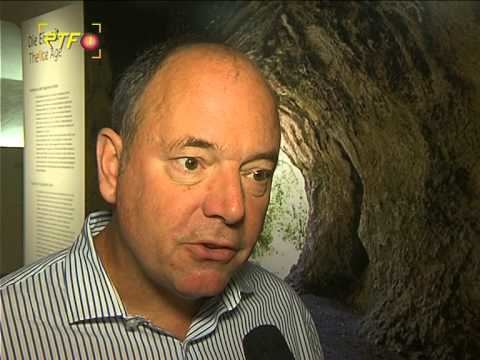Name Nicholas Conard | Role Archaeologist | |
 | ||
Books Tonchesberg and Its Position in the Paleolithic Prehistory of Northern Europe Similar People Judith Thurman, Ernst Reijseger, Erik Nelson | ||
Im Gespräch mit... Dr. Nicholas Conard, UNI Tübingen
Nicholas J. Conard, (born July 23, 1961 in Cincinnati) is an American and naturalized German citizen who works as an archaeologist and prehistorian. He is the director of the department for early prehistory and quaternary ecology and the founding director of the Institute of Archaeological Sciences (Institut für Naturwissenschaftliche Archäologie) at the University of Tübingen in Germany.
Contents
- Im Gesprch mit Dr Nicholas Conard UNI Tbingen
- Education and career
- Research
- Honors and awards
- Selected articles
- References

Education and career

Conard received his bachelor’s degrees in Anthropology and Chemistry at the University of Rochester, New York in 1983. He continued at the University of Rochester to be awarded with an interdisciplinary master’s degree in physics, geology and anthropology in 1986. Conard earned an additional master’s degree and a doctoral degree in anthropology at Yale University in 1988 and 1990, respectively. After achieving his Ph.D. he worked at the University of Connecticut as an assistant professor in Anthropology from 1991 until 1993. In the mid-1990s, he worked at the Römisch-Germanisches Zentralmuseum in Mainz/Neuwied as a Humboldt Research Fellow. He was appointed to the position Chair of Early Prehistory and Quaternary Ecology at the University of Tübingen in 1995.
Research

Conard is the project leader of a team working on an archaeological examination of the Hohle Fels cave in the Swabian Jura area, a low mountain range in Baden-Württemberg, Germany, bounded by the Danube in the southeast and the upper Neckar in the northwest. This is near where the Löwenmensch figurine, (meaning "lion-human") was found in 1939, forgotten due to the war, and only reexamined following a 1997 discovery of additional parts of the figurine. Conard's team has been exploring the Hohe Fels site for approximately twenty years. Recently they uncovered more fragments of human female figurines that date to the Aurignacian, an Upper Paleolithic culture, confirming dates exceeded only by the Löwenmensch figurine and that such female figurines are more widely distributed than thought previously.
